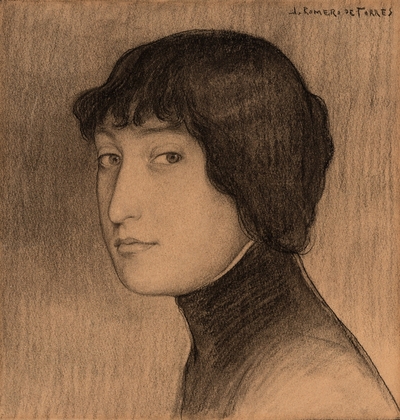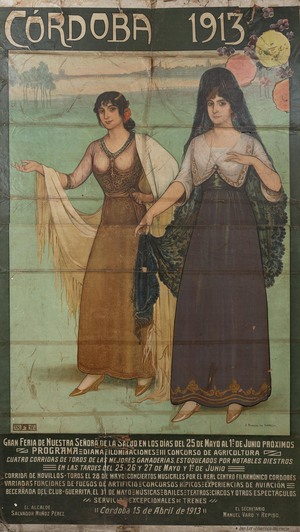Romero de Torres - Identity and symbol
Julio Romero de Torres has become the quintessential ambassador of Cordovan art. Unlike the majority of artists who achieve fame and the recognition of the critics and the people posthumously, Julio managed to be loved and praised by both of them in life.
We cannot talk about this city and not automatically think of the artist and his representation of the woman with brown skin and dark eyes, her greenish-blue tones, or her bodily representations that are planted upright and proud, reminding us of her Renaissance influence, both in forms and in technique.
The artist’s work, due to its evocations and its scope during a very fruitful time in artistic circles worldwide, is the foundation of Córdoba’s own identity. The icing on the cake of centuries of pictorial and plastic production of the city, -although it is currently in good health-, we can close with Julio what would be considered “classic” figurative art, classic in quotation marks because its representations could not be more modern at the same time, claiming the strength of women.
Roman, Arab and Jewish Cordoba surround the master’s work with mystery and silence. Even if he was attracted to the technique of the Italian primitives, absorbed the echo of the pre-Rafelites and took a more mystical and less obvious version of French symbolism, he would not develop a preconceived plan in his work, but rather let himself be carried away by the spirit. of his city.
As the critic and art collector Antonio Manuel Campoy well described: «In Romero de Torres the light and shadow of the oldest Andalusian legacy are embodied: the dualism of love and death, Eros and Thanatos. Not with the frenzy and pathos of Gothic and Baroque that he had so close as a child in Cordoba painting and sculpture, so Dionysian by expressionists. His Andalusianism is serene and balanced, calm, almost ataxic: Cordoba, stoic contemplative like a verse by Lucanus or a thought by Seneca, and if he is not entirely Apollonian, it is precisely because of the Jewish element that nests in the eyes of his women, the same that twitches the arrow and the seguiriya, the one who sows the poetry of Don Luis de Góngora with inextricable Talmudism ».
A not very considered part of the author’s work are the posters, which he designed in large numbers. Nevertheless, it is an essential element, especially because it is an indicator of his artistic personality, because of the kind of interest he reveals with respect to the world. Through the posters and illustrations he made for numerous events and books, Romero de Torres participates in the style of his time. At the beginning, they were garments like shawls that covered a highly charged feminine air. As the years pass and the brilliant night that Ramón del Valle Inclán personifies, the scenes will become more and more audacious, each time more impregnated with fashionable eroticism.
The composition shows two naked women; on the left Margarita Goudon, a Russian dancer well known as “la Russina” in Madrid in the 1920s; and to the right the model Asunción Vouet. Both totally naked and simply dressed in shoes. The first in profile, with her body and face upright, proud and defiant. The second who looks with a gloomy expression and sidelong at the arrogance of her rival. The two women dispute the man, represented as the Cordovan hat upside down, heralding misfortune, according to bullfighting symbols. This powerful scene is framed between the sofas and satin curtains that make up the background, providing a great erotic charge to this “duel” scene.
Julio Romero de Torres grew up in a family and intellectual environment, his father Rafael Romero Barros was a painter, teacher and writer so he had a great general culture that he instilled in his eight children, almost all of them linked to art, archeology and conservation. and dissemination of our heritage. Among them it is worth highlighting, in addition to Julio, Enrique and Rafael. The eldest, Enrique, was a painter, curator, and directed the Museo de Bellas Artes de Córdoba until 1941. Like his father, he was a man of letters but perhaps his greatest achievement was his career as an archaeologist and his important discoveries and involvement in the Roman and Caliphate finds in the city. Rafael, the eldest son, was a magnificent painter and draftsman whose career was cut short at a very young age, being considered by many critics of the time the best technically gifted of the brothers.








